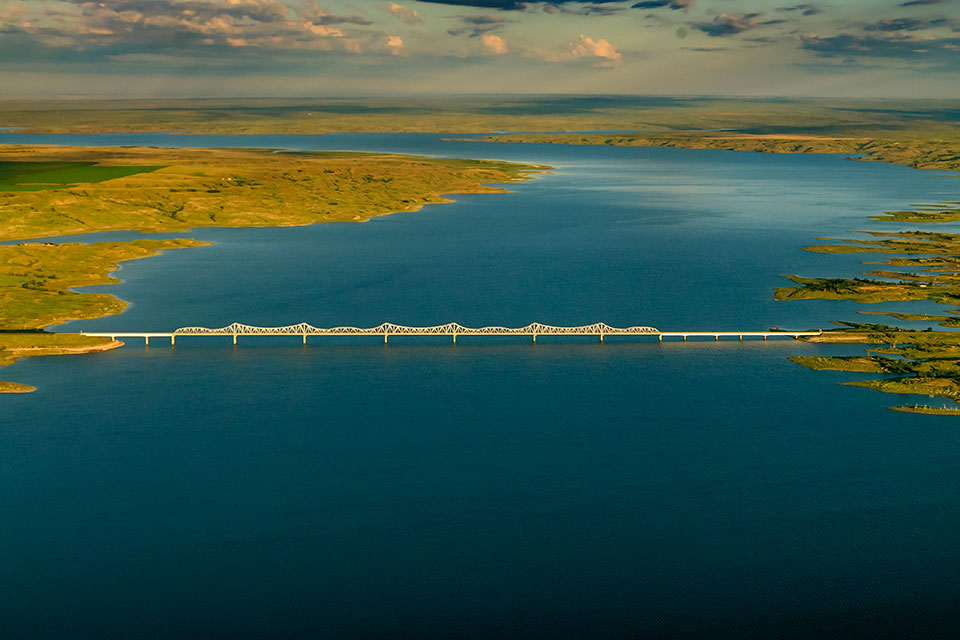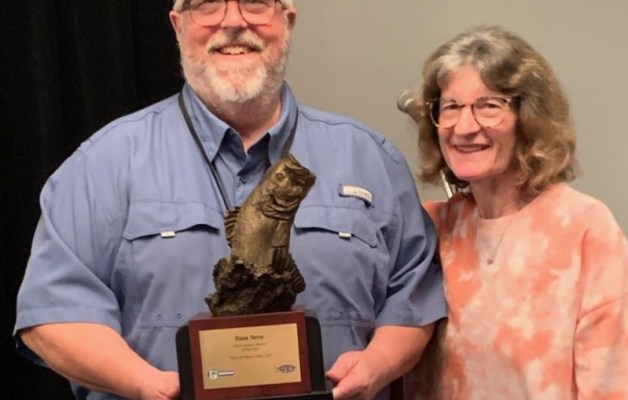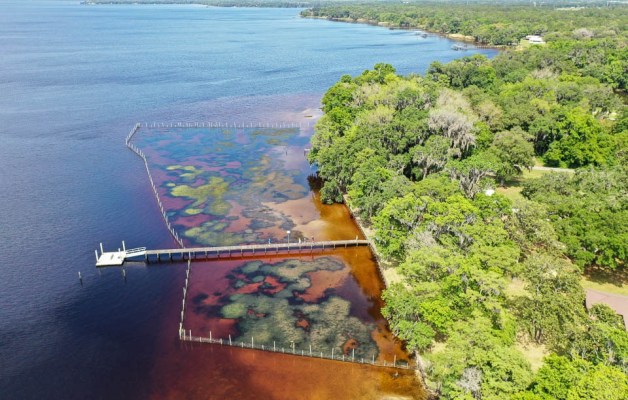
Low water, pelagic smallmouth, unique forage and a massive fishery that fished really small. Those were some of the themes that played out during the Guaranteed Rate Bassmaster Elite at Lake Oahe in South Dakota that saw Austin Felix win his first blue trophy.
Mark Fincel is a fisheries supervisor for the South Dakota Game, Fish and Parks who has been studying Lake Oahe for many years and he dives into some of the details that made this tournament so compelling.
The smallmouth population and popularity are growing
Smallmouth stocking began back in the 1980’s, but it took until about 2005 for the population to really take off. With the state record smallmouth caught last year, 7 pounds, 4 ounces lunker caught by B.A.S.S. Nation competitor Troy Diede and multiple 20-pound and over bags during the Elite event, the evidence is there that the fishery is coming into its own.
“Believe it or not we are still building a smallmouth fishery,” Fincel said. “We started stocking smallmouth in the 80s but it has been improving every year since then. It has really started to pick up in numbers in size. It’s really dependent on the food that is out there at a given time.”
Walleye were also stocked in Oahe, and that population took off much quicker than the smallmouth, and as a result walleye became the most popular sport fish to target. And while walleye are still dominant as far as popularity, more people are starting to smallmouth fish.
“It has been amazing to see the shift in the angler demographic we have seen in the last 10 years,” Fincel said. “The lake is still dominated by walleye anglers but we have seen increases in smallmouth bass anglers. We see more of the state and regional stuff coming up to Oahe. You see it in some of the tackle stores. 10 years ago it was all walleye tackle. Now, you are seeing lots of bass tackle as well.”
In his assessment, Fincel said the numbers of smallmouth are good overall, with most of the population between the Highway 212 bridge and Swan Creek. The East side of the lake tends to hold more smallmouth and better smallmouth habitat, while the West side tends to have more of a muddy, shale composition.
As far as another state record smallies being caught, Fincel said it may take a couple years for it to be broken.
“There are big fish out there and in my position, people send me a lot of pictures,” he said.
“There are definitely big bass out there. I have seen some 6 ½’s, pushing 7’s, but I think the 7-4 is safe for a couple years. Keep in mind, that 7-4 was only 19 inches long.”
Low water cycle
During this tournament, Lake Oahe was much lower than full pool and much of the structure that anglers found in pre-practice before the lake went off limits was on dry land. The Missouri River and Lake Oahe’s water source is mostly from the snow melts from the mountains in Montana and Wyoming.
“90 something percent of all the water that comes in the reservoir is snowfall,” Fincel said. “Since 2011, the snowpack has been below average every year and we have been dropping more and more. There’s more water going out than coming in.”
It isn’t the first time Lake Oahe has been really low, however. Back in the mid-2000s, South Dakota was in a drought until 2008. The next year, the lake rose 30 feet and by 2011 the lake was at full pool.
“Anytime you have that happen, you flood all kinds of vegetation on the shoreline,” Fincel said. “You have nursery habitat, rearing habitat. As soon as this reservoir refilled, there was a resurgence of productivity across the board. Sport fish, prey fish, everything has been doing well across the board.”
Now for the last couple of years, the water has been dropping steadily and the fishing is getting tougher. But a large amount of snowfall this winter and the following years can bring the water level back up and flood the shoreline cover that has grown up.
“We could have a high snowpack year and be right back in the game or we could stay in this drought trend and keep dropping,” Fincel said. “You can already see the cottonwoods, willows, and all the vegetation coming up on the shoreline. So when it does flood again, we will have a resurgence like we saw in 2011 and 1997.”
Bait, bait and more bait
Cisco (lake herring), smelt depending on time of the year and gizzard shad are the baitfish that drive Lake Oahe. Almost every predatory fish that lives in Lake Oahe chases these fish, including smallmouth bass. The Elite pros found this out pretty quickly, as many of the smallies they saw on forward-facing sonar were constantly moving.
The gizzard shad numbers fluctuate from year to year, and where the bass setup depends on the gizzard shad population.
“If we have a good year for gizzard shad, the fish stay shallow and chase them,” Fincel said. “The gizzard shad haven’t taken off this year yet so the fish are deep and chasing the cisco.”
For the last two years, excluding 2020 because of COVID-19, Iowa State University and South Dakota Game and Fish have conducted a smallmouth diet study and Fincel said he was surprised by one aspect of their diet.
“I was shocked by the amount of invertebrates that these fish eat. It is kind of unbelievable,” Fincel said. “Orange spotted sunfish, we saw baby Northern pike, backswimmers, mayflies, even crayfish. We don’t see crayfish anywhere, but when you start looking at the bass and all these things pop up, it is kind of surprising.”
Future of Oahe
As it stands, Lake Oahe doesn’t have any invasive species, but zebra mussels are close to entering the system, which will clear up the water even more and increase light penetration.
“We are clean right now, but it definitely weighs heavy on our minds,” he said. “Zebra mussels are already in the drainage so it is just a matter of time. For angling, that is going to have huge ramifications.”
Silver carp will also be a threat eventually as well, but the efforts to stop their spread by Game, Fish and Parks have been effective. Fincel said gobies will eventually be an issue as they are in Lake St. Clair, St. Lawrence River and Lake Erie. But for now, they are far enough East to where they aren’t an immediate concern.





